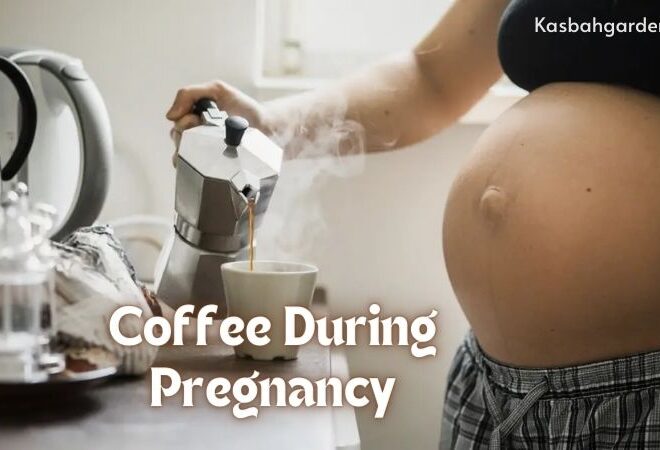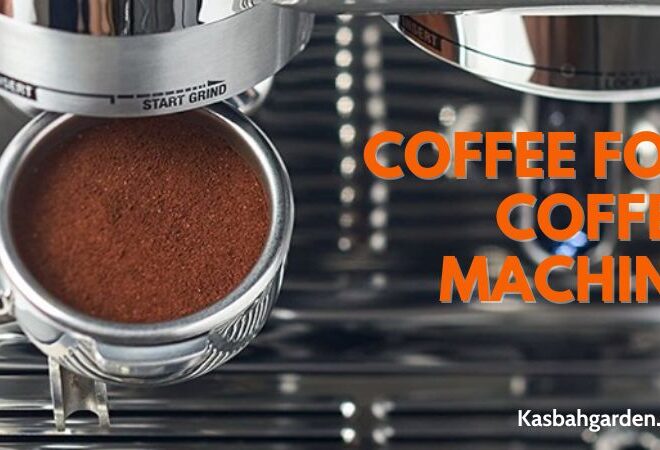Coffee Ice Cream – A Sweet Treat with a Caffeine Kick?
In the delightful world of desserts, coffee ice cream stands out as a fusion of two beloved indulgences: the rich, aromatic allure of coffee and the creamy, soothing pleasure of ice cream. This decadent combination invites a question that piques the curiosity of many: Does coffee ice cream contain caffeine? As simple as the question may seem, the answer opens the door to a fascinating exploration of food science, health considerations, and culinary creativity.
Our journey into the heart of this creamy conundrum is guided by expertise in nutrition, food science, and consumer trends. We delve into the nuances of coffee ice cream’s caffeine content, revealing how various factors—from the type of coffee beans used to the methods of infusion—play a crucial role in determining its potency. This article not only sheds light on what you’re actually consuming when you savor a scoop of coffee ice cream but also equips you with the knowledge to make informed decisions about integrating this treat into your lifestyle.
Whether you’re a coffee aficionado, an ice cream enthusiast, or simply curious about the crossover between these two realms, this exploration promises insights that will enrich your appreciation and understanding of coffee ice cream. Beyond mere numbers, we examine the broader implications of caffeine consumption through this unique medium, including health considerations and the impact on sleep patterns.
As we unravel the mystery of caffeine in coffee ice cream, we invite you to join us on this delectable deep dive. Prepare to have your curiosity sparked, your knowledge expanded, and your palate intrigued, as we explore the caffeinated contours of one of dessert’s most intriguing questions.
Overview of Typical Caffeine Levels in Coffee Ice Cream

Coffee ice cream does contain caffeine, but the amount is relatively low compared to a cup of coffee. Typically, coffee flavored ice cream has between 3-5 milligrams of caffeine, which is significantly less than the 95 milligrams in a cup of coffee or the 35-45 milligrams in a can of soda. The caffeine content in coffee ice cream can vary depending on factors like the type of coffee beans used, the brewing method, and the amount of coffee in the recipe. Some popular brands like Ben & Jerry’s Coffee BuzzBuzzBuzz! contain around 45 milligrams of caffeine per serving, while others like Talenti Cold Brew Sorbetto have a much lower caffeine content. It’s important to check labels if you are sensitive to caffeine or looking to avoid it, as some brands offer decaf options as well. Overall, unless you are extremely sensitive to caffeine, enjoying coffee ice cream after dinner is unlikely to affect your sleep or make you feel “wired”.
- Type of coffee beans – Robusta beans naturally contain close to twice as much caffeine as Arabica. Ice cream made with Robusta will be higher.
- Brewing method – Cold brewing extracts less caffeine than hot brewed methods. Using cold brew coffee will result in lower caffeine levels.
- Amount of coffee – More coffee extract added means higher caffeine content. Premium brands tend to use more for richer flavor.
Comparison with Coffee and Other Beverages
To better understand the caffeine content of coffee ice cream, it helps to compare it to other popular caffeinated products:
- Coffee ice cream (1/2 cup) – 25-50mg
- Brewed coffee (8oz) – 95mg
- Espresso (1oz) – 63mg
- Cola soda (12oz) – 34mg
- Energy drink (8oz) – 80mg
Coffee ice cream generally contains less caffeine than a similarly-sized coffee drink, especially for bolder brews like espresso. It also has around 1.5x more caffeine than a can of soda. Compared to other coffee-flavored treats like mochas or lattes, ice cream will have a bit less since it uses brewed coffee rather than espresso shots.
Popular Brands and Their Caffeine Content
Looking at some top national brands provides more insights into the caffeine range in coffee ice creams on the market:
Häagen-Dazs Coffee Ice Cream
- 1/2 cup – 29mg
- Made with100% Arabica coffee
Ben & Jerry’s Coffee Buzz Ice Cream
- 1/2 cup – about 47mg
- Uses cold brewed coffee
Talenti Cold Brew Coffee Gelato
- 1/2 cup – about 39mg
- Made with cold brew extract
As you can see, even among premium brands, caffeine amounts can vary. Häagen-Dazs, known for quality ingredients, has just 29mg per serving. Ben & Jerry’s Cold Buzz flavor is significantly higher at 47mg. Talenti’s lower fat gelato comes in at 39mg. Check labels to see caffeine quantities in your favorite coffee ice creams.
Consumer Preferences and Market Trends
Multiple factors drive the ongoing popularity of coffee ice cream. Its pleasurable taste and texture profile appeals to many dessert lovers. The mild caffeine lift it provides is also a plus for some consumers. Coffee ice creams now capture about 5-10% of total ice cream market share.
Trends show cold brew coffee is surging in popularity, and ice cream makers are taking advantage by using this smoother, less bitter extract. Coffee ice cream sales also see seasonal spikes in summer, likely from people enjoying the cooling effect of ice cream with their coffee fix. Overall, consumer demand remains solid, ensuring coffee ice cream’s place on the menu.
Health and Nutritional Considerations
Like regular coffee, caffeine effects will depend on the individual. Consumed sensibly, small amounts of caffeine from coffee ice cream pose little risk for most healthy adults. However, children are more sensitive to caffeine. Intake should likely be limited to avoid sleeplessness or anxiety. Pregnant women may also want to exercise caution.
Nutritionally, coffee ice cream has pros and cons. A 1/2 cup provides 13% DV for calcium and 6g of protein. However, it also contains around 21g of sugar and 200 calories. The fuller fat varieties like regular ice cream have about 12g of saturated fat per serving. Going with lower fat gelato or sorbet can help limit calories and fat if desired.
Impact of Caffeine from Coffee Ice Cream
The mild caffeine levels in coffee ice cream are unlikely to provide the same energizing or focusing effects as a strong cup of coffee. Impacts will depend on one’s tolerance and sensitivity. Possible effects could include:
- Slight increase in alertness, especially when consumed later in the day
- Interference with sleep if eaten shortly before bedtime
- Anxiety or jitters in children and those sensitive to caffeine
- Changes in medication effectiveness for some drugs
- Increase in metabolism and fat burning by a small amount
For most people, these effects will be modest and tolerance builds over time. But they are worth being mindful of, especially when consuming coffee ice cream regularly.
Guidelines for Moderate Consumption
Enjoying coffee ice cream in moderation should allow most healthy adults to avoid unwanted side effects from excess caffeine. Here are some consumption guidelines:
- Limit to 1 or 2 servings per day at most
- Avoid within 4-6 hours of bedtime for good sleep
- Keep total daily caffeine under 400mg as recommended
- Closely monitor children’s portions
- Choose lower caffeine options if very sensitive
Being aware of your overall caffeine intake from all sources – coffee, tea, soda, energy drinks – is important when adding caffeine from treats like coffee ice cream. Keep total consumption moderate and listen to your body’s signals.
Decaffeinated and Low-Caffeine Options
If you love the taste of coffee ice cream but want to limit caffeine, some alternatives exist:
- Decaf coffee ice creams – Made with decaffeinated coffee, these retain flavor while containing only trace amounts of caffeine.
- Non-coffee options – Flavors like tiramisu or mocha capture the dessert essence of coffee ice cream without actually containing coffee or caffeine.
- Light ice creams – Varieties made with milk rather than cream are lower in fat without sacrificing on taste.
Decaf coffee ice creams let you experience authentic flavor minus the caffeine jolt. Opting for lighter versions or non-coffee flavored ice creams allows enjoying a similar treat any time of day.
DIY Coffee Ice Cream for Caffeine Control
Making homemade coffee ice cream is a great way to control the caffeine to your liking. Simple recipes allow brewing coffee to your preferences for strength and taste. Other options include:
- Use half decaf and half regular coffee to cut caffeine in half
- Dilute strongly brewed coffee with water for lighter caffeine levels
- Limit coffee extract quantities to as little as 1 tablespoon per recipe
- Substitute products like decaf instant coffee or coffee flavoring
Experiment to find your ideal ratio of coffee flavor to caffeine content. The options are vast when making DIY coffee ice cream.
Expert Insights on Coffee Ice Cream
nutritionists generally agree that coffee ice cream in moderation can be part of a balanced diet for most healthy adults. As registered dietitian Claire Barbano notes:
“Coffee ice cream provides a quick and indulgent way to get in your daily dose of caffeine. The small jolt of energy it provides can give you a lift when you need it. Enjoy a scoop as an occasional treat without guilt – just be mindful of portions and watch your total daily caffeine intake.”
Experts say to exercise caution with coffee ice cream in young children who are more sensitive to caffeine’s effects. For pregnant women, the consensus is small amounts are likely safe, but they may want to err on the side of caution.
FAQ About Caffeine Content in Coffee Ice Cream
Does coffee ice cream have as much caffeine as a cup of coffee?
Most coffee ice creams contain significantly less caffeine than a typical cup of brewed coffee, in the range of 25-50mg versus 95mg per serving.
Is coffee ice cream unhealthy?
In moderation, coffee ice cream can be part of healthy diet for most. But portion size is key given its high sugar, fat and calorie content. Consuming large amounts can lead to unwanted weight gain.
What coffee ice cream has the most caffeine?
Brands that use a larger quantity of coffee extract or roasted Robusta beans tend to have the most caffeine. Ben & Jerry’s Cold Buzz flavor packs a bigger jolt at 47mg per serving.
Is coffee ice cream bad for kids?
It’s generally not recommended young children consume coffee ice cream often due to their sensitivity to caffeine. Limit portions to avoid potential side effects like anxiety, insomnia or hyperactivity.
Does cold brew coffee have less caffeine than hot coffee?
Yes, the cold brewing process results in lower caffeine extraction from the beans compared to hot brew methods. So ice creams using cold brew will typically be lower in caffeine.
Conclusion
Coffee ice cream satisfies frozen dessert lovers and coffee fans alike with its smooth, creamy texture and rich coffee flavor. The mild caffeine lift it provides intrigues many, but appropriate portions should be kept in mind, especially for children and caffeine-sensitive individuals. Seek brands with desired caffeine levels, or control them yourself through do-it-yourself recipes. Keep total daily caffeine in check and enjoy coffee ice cream as an occasional indulgence. With mindfulness of intake, coffee ice cream can be part of an overall balanced and healthy diet.


